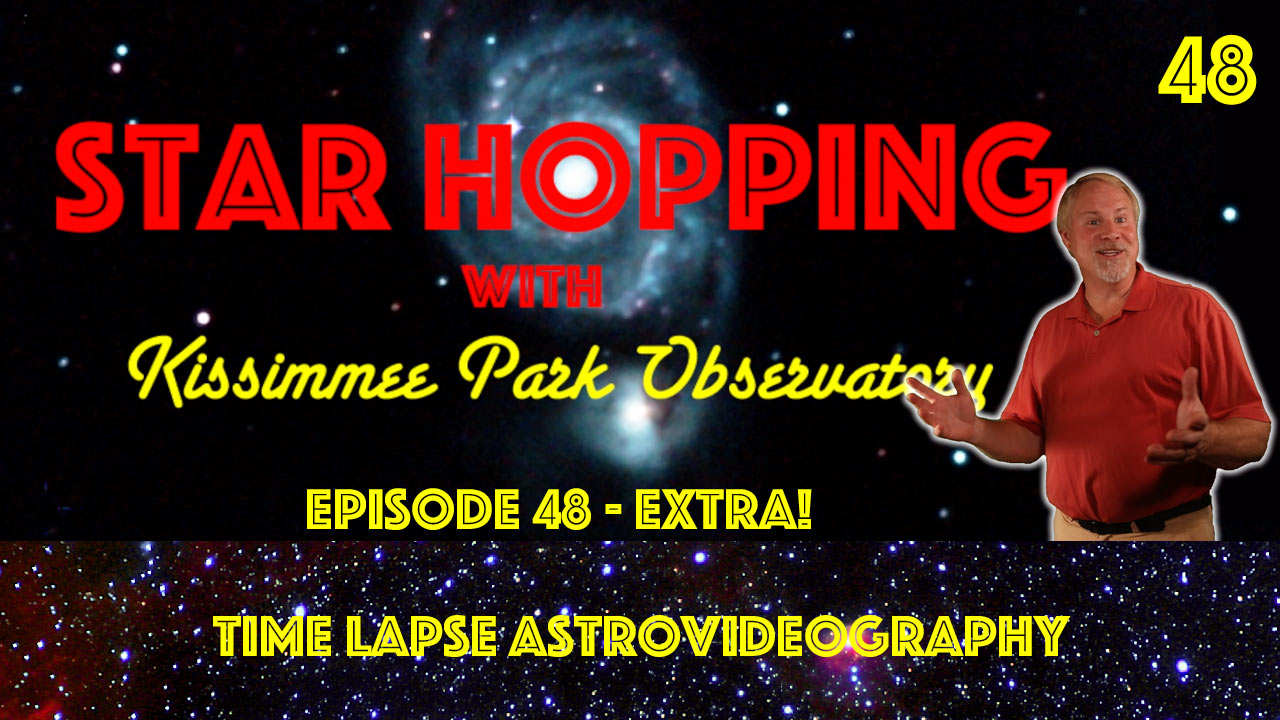In Episode SH048 of Star Hopping…
In this Star Hopping “Extra”, we’re going to continue on our Basic Astrophotography series, and show you how to capture motion in the night sky, through the interesting and fun process of Time Lapse Astrophotography.
Intro
Well in this episode I am finally covering a topic that I have had in the back of my mind for a while, thinking it would be a great episode of Star Hopping. I’m going to show you the basics required to create time lapse movies of the night sky. I’m sure you have seen these before; movies showing the motion of the stars across the sky, moon or sun setting, and other fascinating movies that compress a very large amount of time into 30 seconds or less.
The equipment to perform this type of capture is very simple; all you really need at minimum is a camera, a lens, a tripod, and one other critical item to control the timing of the repeating exposure. I’ll get into the details of the equipment setup shortly.
So let’s talk about a basic star field motion capture. The stars rise in the east and set in the west, due to the opposite motion of the Earth as it turns. The rate of the motion is 15 degrees per hour, 15 arc minutes per minute, and 15 arc seconds per second. This is unperceivably slow to the naked eye. Sure, in a telescope with medium magnification you can see the stars and moon drifting across the eyepiece. But certainly not with the naked eye. So to make this perceivable, we need to compress time. And how do we do that, you ask? I’ll show you how, right after this break…
CLICK >>> Watch this Episode on YouTube!
Let us know your Questions and Comments!
Please feel free to leave a question or comment below, and we will respond as quickly as we can. You can also reach out to Dave on Twitter @StarHoppingMan.
Connect with Star Hopping!
We would love to have you join us on our various social media sites, and subscribe to our newsletter. Visit our Contact page to connect with us!
Credits for this Episode
- All time lapse movies by David Hearn / Kissimmee Park Observatory.


